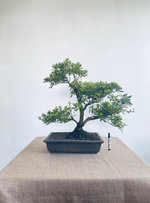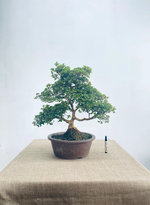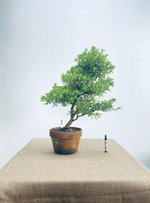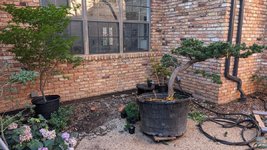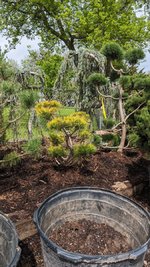Hi,
I am new to Bonsai and am wanting to buy my first one. This might be a bit weird but I am wanting to remove the bonsai from its pot and plant it into the soil in the garden directly. This will be planted into an island mound as part of the design for my Japanese garden. I have checked with bonsai people in my country and they said that it should be easy and there should not be any issues if I don’t touch the roots.
I am currently choosing between different species of Azalea, description of them below and also attaching photos (description follows the order of the photos) of the exact trees that are available to purchase.
1. Azalea Kinsai (14+ years age)
2. Azalea Fujimori (25+ years age)
3. Azalea Fujimori (15+ years age)
4. Azalea Royal Robe (25+ years age)
Would there be any recommendation to which one of the above to get? I think I am choosing between 1 and 2 at the moment.
Thank you.
I am new to Bonsai and am wanting to buy my first one. This might be a bit weird but I am wanting to remove the bonsai from its pot and plant it into the soil in the garden directly. This will be planted into an island mound as part of the design for my Japanese garden. I have checked with bonsai people in my country and they said that it should be easy and there should not be any issues if I don’t touch the roots.
I am currently choosing between different species of Azalea, description of them below and also attaching photos (description follows the order of the photos) of the exact trees that are available to purchase.
1. Azalea Kinsai (14+ years age)
2. Azalea Fujimori (25+ years age)
3. Azalea Fujimori (15+ years age)
4. Azalea Royal Robe (25+ years age)
Would there be any recommendation to which one of the above to get? I think I am choosing between 1 and 2 at the moment.
Thank you.

